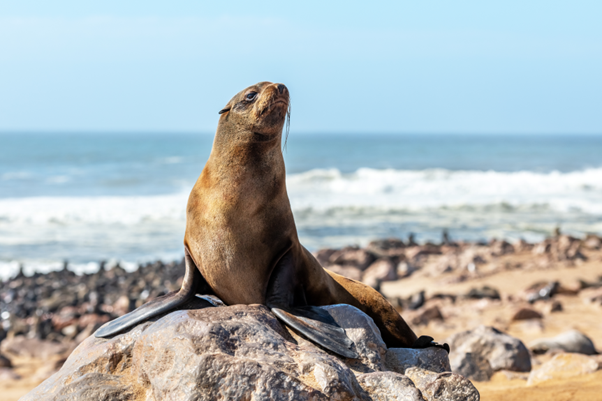The Government of South Georgia & the South Sandwich Islands (GSGSSI) has announced that enhanced Marine Protected Area (MPA) measures have officially come into force, following the signing of new legislation by Her Excellency the Commissioner, Alison Blake CMG.
These strengthened protections, announced in early 2024 following the conclusion of the MPA 5-yearly expert review, include a significant expansion of areas closed to all fishing activity. The newly designated ‘No Take Zones’ now cover over 470,000 km² – representing 38% of the MPA.
In addition, a further 31,000 km² of pelagic closed areas mean that krill fishing is now prohibited across more than half a million km² within the MPA. The no-take zone now covers the UK portion of the “humpback highway” in which whales migrate down from Brazil to feed on krill off the SGSSI.
Vast MPA
The seas surrounding the remote archipelago of South Georgia, and the South Sandwich Islands are internationally recognised as a biodiversity hotspot. Twice the size of France, the maritime zone is home to globally significant populations of seals, whales, penguins and millions of seabirds. The MPA is one of the largest marine reserves on the planet.
The extraordinary abundance of wildlife is drawn to the archipelago’s beaches to breed, as well as to feed on the huge quantities of Antarctic krill, a highly abundant small crustacean that aggregates in the surrounding sub-Antarctic waters.
However, in 1775 it was Captain Cook’s reports of an abundance of seals with their valuable pelts that ultimately led to the development of South Georgia ‘s sealing industry – the first in a series of industries that, for 200 years plundered the living resources of the region, leading to catastrophic declines of the populations of many of the large charismatic marine mammals.
Antarctic fur seals were taken first followed by blue, fin and humpback whales which were hunted to near extinction to supply the whaling stations on South Georgia’s north coast, 100-years after the seals had all but gone. In the mid 1960s, when whales could no longer be found in sufficient numbers, the focus soon turned from hunting to fishing.
Regulated protection
During the five months when highly regulated, licensed fishing is permitted, 40% of the MPA will now be closed to krill fishing. Additionally, 95% of the MPA will be closed to longline fishing, with prohibitions applying within the general benthic closed area—spanning all depths shallower than 700m and greater than 2,250m—as well as within a network of research benthic closed areas at fishable depths, designed to safeguard vulnerable habitats and species.
The greatly expanded and interconnected network of No Take Zones not only protects the most biodiverse and potentially vulnerable marine habitats but also includes regions identified by the International Union for Conservation of Nature (IUCN) as Important Marine Mammal Areas (IMMAs).

